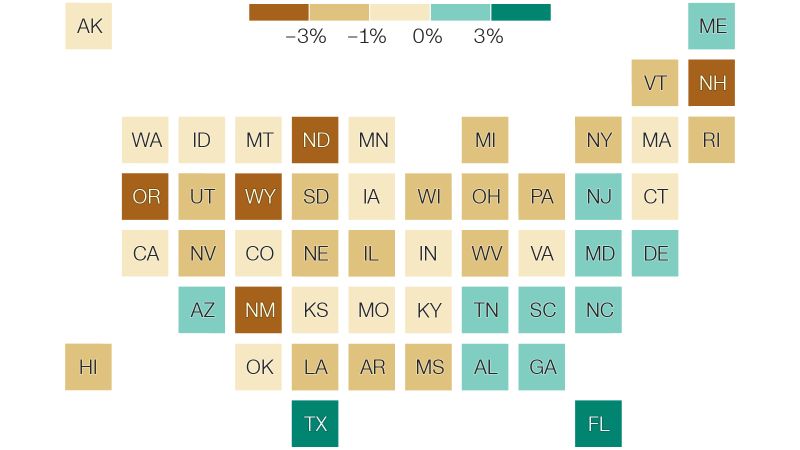Fertility rates dip, women are having babies later: The state of birth rates in the US
Birth rates have declined in most states across the US in recent years, while women are having babies at an older age, according to new data released by the US Centers for Disease Control and Prevention.
Despite the short-term plunge — and comeback — during the early years of the Covid-19 pandemic, the rates have been consistently trending down.
Nearly 3.7 million babies were born in 2022, according to the CDC analysis of birth certificates. The overall fertility rate was 56.1 births per 1,000 women ages 15-44, holding relatively steady from the rate of 56.3 in 2021. After a sharp drop in 2020, birth rates rose in 2021 — the first increase since 2014 — but the numbers still reflect a decline that began before the pandemic.
Covid-19 changed behaviors in a number of ways that affected birth rates, Phil Levine, a professor of economics at Wellesley College, and non-resident fellow at the Brookings Institution, told CNN. People may have engaged in less sexual activity, increased use of contraceptives or otherwise decided to delay parenthood, he said. Other factors, such as reduced access to prenatal health care or closed borders also may have contributed, Levine added.
The bottom line is that there was a stark decline in birth rates during the first year of the pandemic, and it was followed by a rebound the year after, Levine said. But those dramatic changes won’t matter much in the long term because the decline has persisted, he noted.
“Drawing any conclusion about long-term trends relying on those two years would be a mistake,” Levine said.
After two years of significant swings, 2022 data still showed less predictability in birth rates, and such a modest change from the past year shows that the long-term trends that predated 2020 — plummeting fertility — isn’t going anywhere, Levine said.
“In the long run, [the last couple years are] just not going to matter all that much relative to the long-term trend,” Levine said.
The overall decline in births is explained in part by the increasing age of first-time mothers, according to Carolina Aragão, a research associate at Pew Research Center.
“Women have been delaying motherhood,” Aragão said. When people have their first child later, they tend to have fewer children overall, Levine explained.
Birth rates among women in their late 30s and early 40s rose in the last decade, and the birth rate among women over 45 also exceeded one birth per 1,000 population for the first time in more than a decade.
Meanwhile, the teen birth rate dropped to a record low in 2022. There were 13.5 births for every 1,000 teens ages 15 to 19, down from 13.9 in 2021, according to the new CDC data.
Source: CNN


